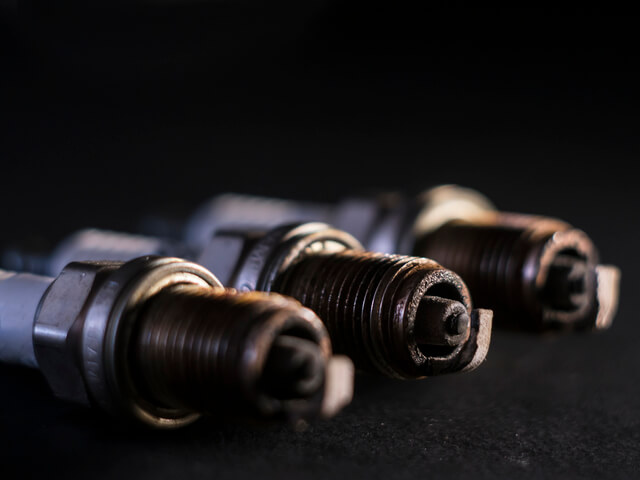Transmission Torque Converter Clutch (TCC) solenoid plays a vital role in controlling the vehicle’s speed and preventing slippage. You can find this beneficial component in the middle engine’s rear and at the transmission’s front. This converter has a clutch that locks the output and input of the engine and transmission. We will learn how to bypass tcc solenoid.
Doing this gains the 1:1 ratio of the engine’s output and transmission’s input that prevents the slippage even at a higher speed. Sometimes, the TCC fails to maintain this ratio, resulting in any serious situation. To prevent any accidental situation, you should learn how to bypass the TCC solenoid.
To handle the broken TCC solenoid, you should also learn how to diagnose and trace the fault in this system. In the later section of this precise guide, we’ll learn what symptoms of a broken TCC solenoid are and how to handle it. Though you can consider replacing it, bypassing it can help handle the emergency. Let’s move down to understand how to diagnose and bypass TCC solenoid.
How to Bypass TCC Solenoid?

Before moving on to learn how to bypass the TCC solenoid, you should learn all about the circuit that controls its functions.
The torque converter clutch solenoid controls the fluid pressure that controls the function of the converter lockup clutch. It releases and applies to control the clutch.
Like TCC solenoid controls the torque converter lockup clutch, the transmission control module (TCM) or Powertrain control module (PCM) controls the TCC solenoid valves. Different vehicles feature a different system where TCM or PCM control the TCC solenoid valves, respectively. Now, let’s read on to understand how to bypass the TCC solenoid.
Connect the Standard Bulb to the PCM Circuit
You can simply bypass the TCC solenoids by using a standard 194 bulb. Take a bulb and connect one side to the circuit of PCM. Make sure that this bulb has a wire that’s long enough to reach the ignition.
Connect the Bulb to Ignition
After successfully connecting one side of the standard 194 bulbs to the individual circuit coming from the PCM, the next step is to connect the other end of the bulb to ignition. Connect the B+ of the ignition to the other end of the standard bulb.
You Have Done It
When you bypass the TCC solenoids to the ignition using a standard bulb, the bulb will load between the ignition and the TCC solenoids. So, it will help stimulate the TCC. After this, your vehicle’s lockup clutch system will work effectively.
Note: Ensure that there is no low-temperature plastic near the inserted bulb. As the bulb repeatedly turns on and off, it may melt the plastic. So, try to insert the bulb away from the plastic items of your vehicle.
How to Test TCC Solenoids?

When you suspect your car’s TCC solenoid is not working fine, you can check it out. Here is how to do this.
Lift the Car
First of all, you’ll have to raise your car to test it. Use jacks to support the vehicle. Ensure that you have placed jacks at all four corners of the vehicle to support it well.
Remove the Transmission Bolts
When you’re sure about the jack support, proceed to unscrew the bolts that hold the transmission oil pan. Use a ratchet to remove these bolts.
Remove the Pan
After removing the transmission oil pan’s bolts, you can remove them easily. So, slide the oil pan to take it out.
Unplug the Solenoid
Soon after removing the transmission oil pan, the solenoid will be bare to you. You’ll see two plugs on the shift solenoid. Unplug one of these plugs to test where the problem is in the TCC solenoid.
First, remove the transmission oil pan then you can unplug the plugs of the solenoid shift. You can diagnose the issue only when you know the characteristics of a bad solenoid.
Symptoms of a Bad Solenoid

Here are some symptoms that show your solenoid is not in a good state. If you notice any of these, instantly see the mechanic or manage to bypass.
Check Engine’s Light
TCM or PCM controls almost all the solenoid operations, so it keeps checking its operations. The check engine’s light will turn on and off regularly in normal situations. However, if you notice it is gone permanently, it means your TCC solenoid is not working appropriately.
Problematic Shifting
If you notice any issue with the gear shift, it means the TCC solenoid is not working well. As TCC controls the shift, any wrong will also lead to a bad or erratic shifting.
No Gear Shifting
Sometimes, the solenoid may suffer any severe damage. The solenoid will not let you change the gears properly in such a situation. A faulty TCC solenoid will prevent the proper fluid pressure necessary for gear shifting. When the TCC fails to create enough pressure, it will lead to permanent gear shifting issues.
Driving With a Faulty TCC Solenoid
Most of the drivers get confused when it comes to the solenoid issue. They wonder whether they can drive with a faulty TCC solenoid or not. A simple answer to their query is ‘Yes’. When your vehicle faces the TCC solenoid breakdown suddenly, you can manage to drive it for some distance. However, in such a situation, gear shifting is a hard task. So, it’s good to avoid putting the car into a situation that will need repeated gear changes. If you stress the gear transmission, it may cause certain issues.
Conclusion
TCC solenoid valves control the lockup clutch operations. When it works well, your vehicle’s transmission system will work effectively. Certain situations may lead to any breakdown in the TCC solenoid. It’s good to learn the symptoms of a bad solenoid. We have enlisted some signs of a bad TCC and traced the issue. However, you can drive it by bypassing the TCC solenoid by the above standard bulb method.







